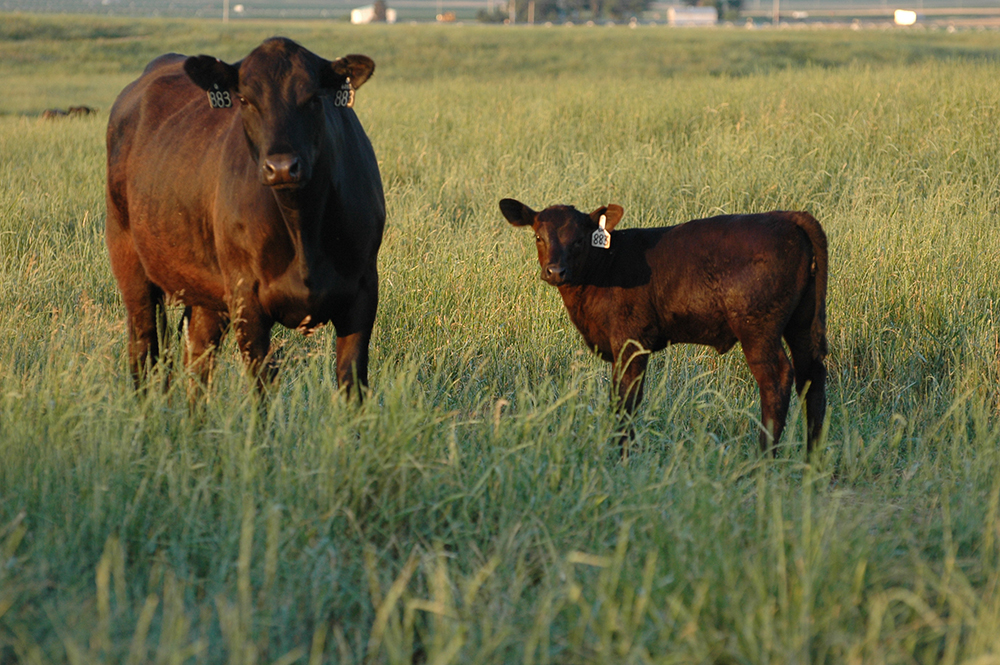
Weaning with a plan
by Miranda Reiman
Children starting school are a lot like calves getting weaned. Each individual is different. For some, the experience is more stressful than for others, but careful preparation by their caretakers can help make the whole experience much more productive.
“Producers need to plan way ahead of the time period when they will start weaning, while also paying attention to their calves throughout the production system,” says Max Irsik, Extension veterinarian at the University of Florida. Watching indicators like the cow condition, range quality and general calf health can help producers decide on the best time to wean.
“At birth it is important that calves have a good mother. The cows need to be healthy, maternal, in good body condition, provide high quality colostrum, and then adequate milk during the suckling period,” he says.
“Prior to separation, calves should be immunized a minimum of one time, preferably two for the clostridial and respiratory diseases, de-horned, de-wormed, castrated and individually identified,” Irsik says. Producers should also get them used to different sights and sounds.
“Being out with the cows, looking at the calves, getting the cows and calves used to being around people, traffic and folks on horseback – all of those things can have an effect later on, helping to reduce stress for both the cow and calf ,” he says.
Once cattlemen have established a target date or time, they need to put a “game plan” in place, says Jeff Heldt, nutritionist for Land O’ Lakes Purina Feed.
“That includes the people – who is going to do what – and the facilities,” he says. Knowing who is going to feed, walk pens and track data is a key.
“Then they need to start thinking about what nutritional package they need to put together,” Heldt says.
Ahead of time, that program should include highly available trace minerals and vitamins, he says. “That gets the immune system primed before the stressful event.”
Getting calves used to eating out of a bunk will increase success, too.

“Depending upon the production system at the ranch, it is helpful to expose calves prior to weaning to automatic watering systems, eating out of a bunk and having access to a highly palatable ration,” Irsik says.
Some producers put out a silage mixture; others offer good-quality, free-choice hay to get them accustomed to a new feed source. Heldt says that probably depends on what the weaning ration will be and the ranch resources.
“It’s got to be highly palatable to drive intake,” he says, “and pretty nutrient dense, because those intakes the first week or 10 days could be very, very low. There also needs to be a balance between highly fermentable energy and roughage, to avoid any digestive upsets or acidosis instances.”
Straight alfalfa, for example, could cause bloat, but mixing that with grass hay might curb the problem.
Heldt says they look for calves to eventually eat 3% to 3.5% of their body weight. Purina sells complete pelleted feeds if roughage is available or texturized feed with roughage built in, to help get calves started and up to that intake target.
“Whatever you use, the main goal is to maintain a performance level of 2.5 pound (lb.) to 3 lb. average daily gain,” he says. “That way the cattle don’t get pushed too hard, but maintain a health and performance status so the feedyard can be successful after that.”
Keeping cattle on the same plane of nutrition between weaning and sending to a feedyard will help preserve beef quality-grade potential later on.
“Looking at it from a feedyard standpoint, that time period is probably as critical as any,” Heldt says, noting that implant strategies are ideally coordinated with the next person down the line.
Irsik points out that a good weaning program probably benefits cow-calf producers more if they’re retaining ownership, but he says it’s the responsible thing to do regardless.
“Even if they feel that they are not getting paid for it, it’s the job of the cow-calf producer to prepare those animals for the next stage of production,” he says.
School teachers appreciate students who come to class with the right supplies and attitude. It makes sense that feeders would want healthy calves that are ready to eat and fit seamlessly into their operations.
